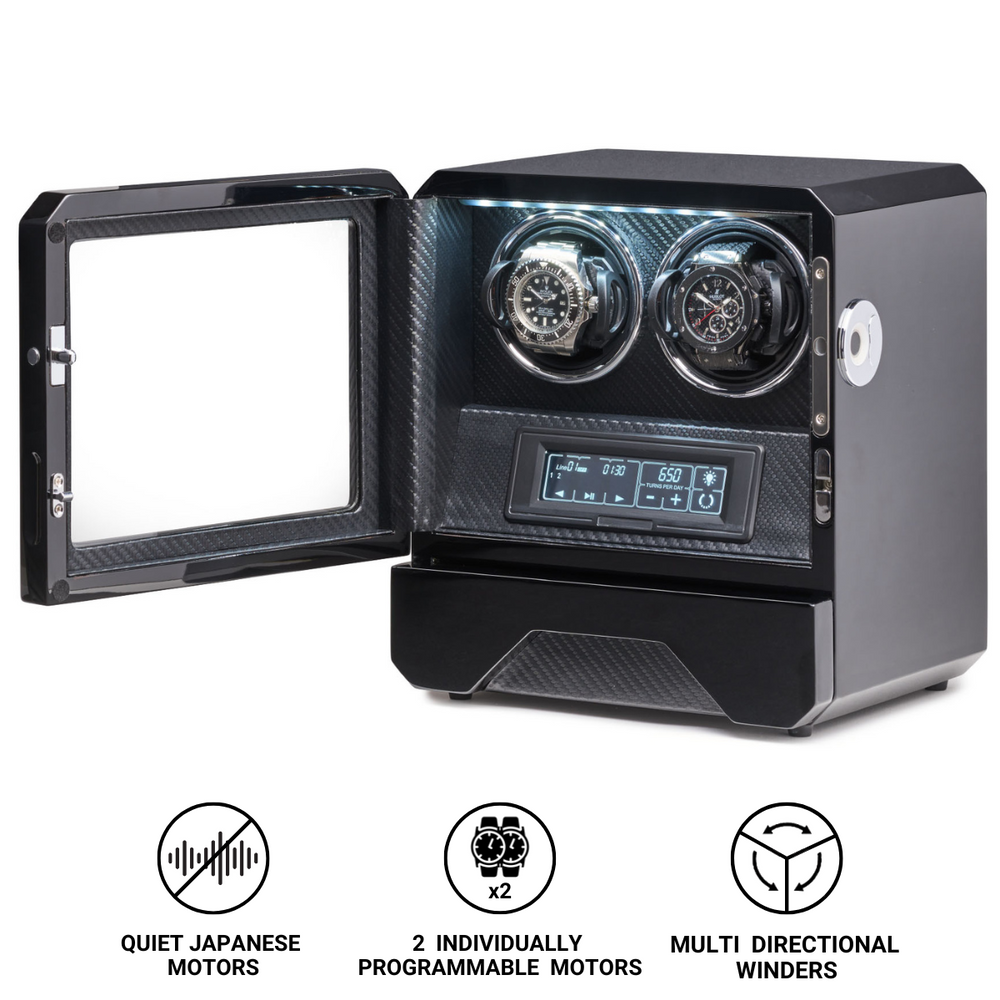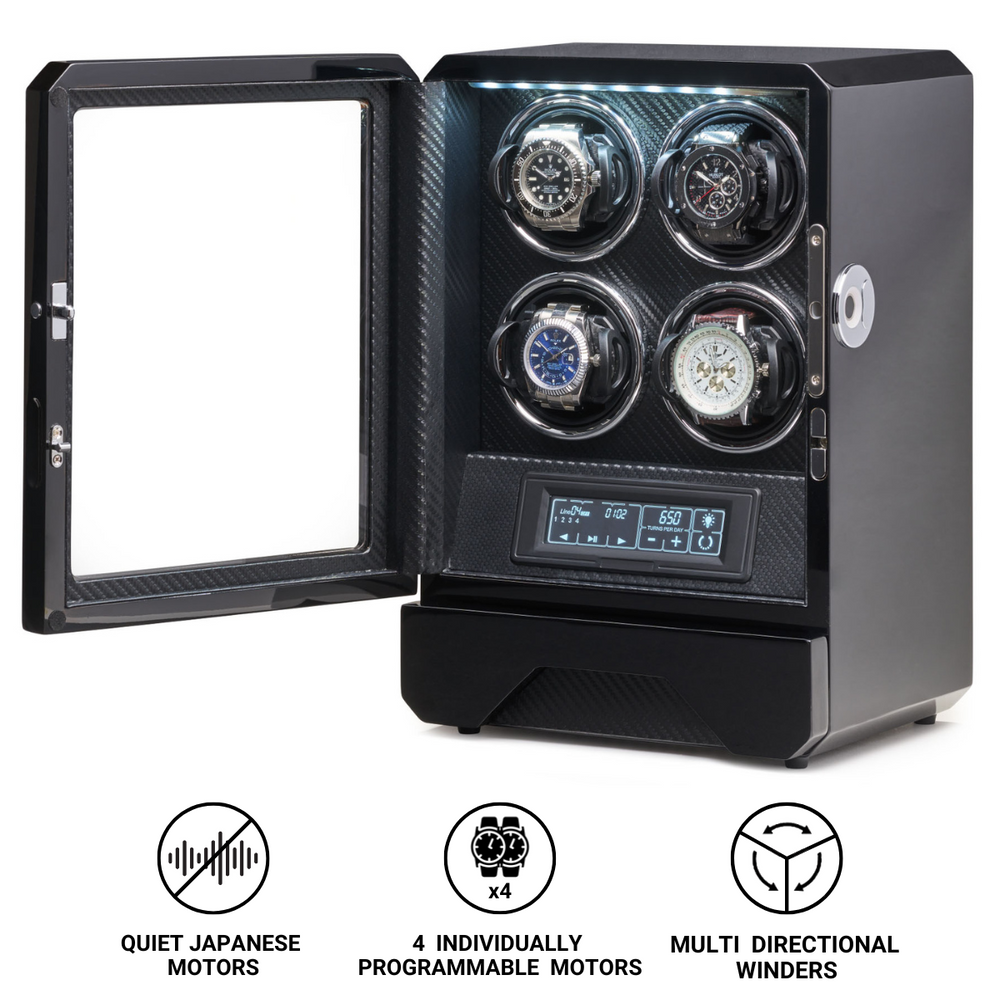What is Ghost Bezel?
Among the most evocative features in the world of vintage and tool watches, few details capture the passage of time as beautifully as the ghost bezel. This term refers to a watch bezel that has naturally faded in colour over years or decades of use, exposure to sunlight, humidity, and environmental conditions. Once vivid and saturated, the bezel takes on a softer, washed-out tone that tells a unique story of age, wear, and authenticity.
In the modern age of pristine finishes and scratch-resistant materials, the ghost bezel stands as a powerful reminder of the beauty that comes with imperfection. It represents not only the natural patina of a well-lived life but also the enduring appeal of character and individuality in horology.
The Origins of the Ghost Bezel
The phenomenon of bezel fading first appeared during the mid-twentieth century, when brands such as Rolex, Tudor, Omega, and Blancpain began producing professional dive watches with aluminium bezel inserts. These bezels were designed to serve a practical purpose, allowing divers to track elapsed time underwater. The aluminium inserts were anodised and dyed to achieve distinct colours such as black, blue, red, or green.
Over time, exposure to ultraviolet light, saltwater, and temperature changes caused the pigments in these anodised bezels to degrade. Black bezels turned to grey or deep blue, blue ones shifted to powdery turquoise, and red tones softened into pink or coral hues. Instead of being seen as damage, these changes became marks of authenticity that vintage collectors came to cherish.
The term “ghost bezel” emerged from this appreciation for faded bezels. The word “ghost” captures both the pale, ethereal colour that develops and the sense of time’s invisible influence. Each ghost bezel tells its own story, shaped by years of exposure and use.
How and Why Bezels Fade
Bezel fading occurs through a combination of environmental and material factors. The process is gradual, and no two bezels fade in exactly the same way. The most common causes include:
-
Ultraviolet Exposure
Prolonged sunlight is the most significant contributor to fading. Ultraviolet radiation breaks down the chemical structure of dyes and pigments, particularly in anodised aluminium, causing colours to lighten over time. -
Salt and Moisture
For dive watches, exposure to saltwater accelerates the breakdown of surface coatings. Repeated contact with seawater, followed by drying, can lead to subtle oxidation and bleaching of the bezel. -
Temperature Variations
Extreme heat and cold can cause minute expansions and contractions in metal and enamel surfaces. Over the years, this leads to micro-abrasions that soften colours and textures. -
Chemical Interaction
Certain cleaning products, oils, and even human skin chemistry can influence fading, particularly if the watch is worn regularly without proper maintenance.
Interestingly, while fading was never intentional, many collectors now view it as a desirable form of natural ageing. A ghost bezel serves as tangible proof of a watch’s journey through time, much like the patina on bronze or the ageing of leather.
The Aesthetic Appeal of the Ghost Bezel
The charm of the ghost bezel lies in its ability to tell a story visually. Its soft, desaturated tones lend a sense of nostalgia and authenticity to a watch, creating an immediate connection between the object and its history.
A once-jet-black bezel that has turned a smoky grey evokes the idea of countless hours under the sun. A once-deep-blue bezel that has lightened to sky-blue suggests years of wear at sea. This transformation gives each watch a distinctive personality, impossible to reproduce artificially with absolute accuracy.
Collectors often compare ghost bezels to the concept of wabi-sabi, a Japanese aesthetic that celebrates imperfection, transience, and natural beauty. The subtle unevenness of the fading, the softness of the colours, and the sense of depth all contribute to this appeal.
The contrast between the aged bezel and the rest of the watch can also heighten its character. A faded bezel set against a well-preserved dial and case highlights the watch’s lived experience without diminishing its elegance.
The Role of Materials in Bezel Fading
Not all bezels fade in the same way, and much depends on the materials used in their construction. Historically, manufacturers have employed several materials for bezel inserts, each with distinct properties and ageing behaviours.
-
Aluminium Inserts
The most famous examples of ghost bezels come from aluminium inserts, which were used extensively from the 1950s to the early 2000s. Aluminium is lightweight and easy to anodise, allowing for vibrant colours. However, it is also porous, meaning that exposure to light and moisture naturally breaks down its dye. This results in the soft, pastel-like hues that define classic ghost bezels. -
Acrylic Inserts
Some early dive watches and military timepieces used acrylic or bakelite bezels. These materials were prone not only to fading but also to cracking and discolouration. While less durable than aluminium, their unique ageing patterns can produce ghost-like translucence that appeals to collectors. -
Ceramic Inserts
Modern watches increasingly use ceramic bezels because they are virtually scratch-proof and fade-resistant. As a result, ceramic bezels do not develop the same ghostly patina over time. For purists, this durability, while practical, also removes the romantic unpredictability that aluminium bezels possessed.
This transition from organic materials to modern synthetics marks a shift in watchmaking philosophy. Where once watches were tools meant to age with their owners, today they are engineered for permanence. The ghost bezel reminds enthusiasts of an earlier era when wear and weathering were part of a watch’s identity.
Iconic Watches with Ghost Bezels
Several models are particularly renowned for their faded bezels, many of which have become icons in the world of vintage collecting.
-
Rolex Submariner
Perhaps the most famous example, vintage Submariners with ghost bezels command high demand among collectors. Depending on age and exposure, bezels can fade from deep black to slate grey or even bluish silver, giving each piece a distinct appearance. -
Rolex GMT-Master and GMT-Master II
The bi-colour aluminium bezels of these models, especially the “Pepsi” (red and blue) and “Coke” (black and red) variants, are particularly prone to fading. Over time, the red portions often soften to pink or coral, and the blue can shift toward turquoise. -
Tudor Submariner
Tudor’s dive watches, which shared design DNA with Rolex, often display similar fading patterns. The brand’s military-issued models in particular show striking examples of ghost bezels, enhanced by years of active service. -
Omega Seamaster and Blancpain Fifty Fathoms
Early examples of these pioneering dive watches also developed natural patina on their bezels, producing shades of grey, brown, or green that collectors now treasure.
Each of these models illustrates how the ghost bezel transforms a standard production watch into a one-of-a-kind historical artifact.
Collecting and Valuing Ghost Bezels
In the modern collector’s market, ghost bezels have become highly desirable. Their appeal lies in authenticity and individuality rather than perfection. The degree of fading can significantly influence a watch’s value, but the effect depends on context and taste.
A uniform, even fade is often preferred, as it gives the watch an elegant, harmonious appearance. However, some collectors appreciate irregular or dramatic fading, which reflects a more rugged and storied past.
Because ghost bezels cannot be artificially replicated with the same natural beauty, they are seen as irreplaceable. While some manufacturers have attempted to mimic the look through controlled chemical processes or artificially aged inserts, the results rarely capture the subtle charm of genuine fading.
For serious collectors, the presence of a ghost bezel can transform a watch from an ordinary vintage piece into a truly unique treasure.
The Emotional and Cultural Significance
Beyond aesthetics and collectability, the ghost bezel represents something deeply human. It embodies the relationship between time and change, showing that even in objects built for precision and durability, nature leaves its mark.
Every scratch, fade, and discolouration speaks of moments lived and environments endured. The ghost bezel is not simply an aged component but a witness to time itself, much like the worn brass of a ship’s compass or the softened leather of a well-travelled strap.
In this sense, owning a watch with a ghost bezel connects the wearer to a continuum of history. It is an appreciation not just for craftsmanship, but for the passage of time as an essential part of beauty.
Preservation and Care
Collectors who own watches with ghost bezels often face a delicate balance between preservation and wear. While some prefer to protect the faded bezel from further change, others embrace continued natural ageing as part of the watch’s evolving story.
To preserve the current appearance, it is best to store the watch away from prolonged sunlight and excessive humidity. Cleaning should be gentle and chemical-free to avoid altering the fragile surface tones. Many collectors also avoid replacing or refinishing ghost bezels during restoration, as doing so erases part of the watch’s authenticity and value.
Conclusion
The ghost bezel is a phenomenon that captures the very soul of vintage watch collecting. What began as an unintentional by-product of environmental exposure has evolved into a celebrated aesthetic, symbolising the harmony between time, nature, and craftsmanship.
In an industry obsessed with precision and perfection, the ghost bezel reminds us that true beauty often lies in imperfection. Each faded ring tells a silent story of years passed, adventures taken, and lives intertwined with the instrument that marked every second.
To collectors and enthusiasts alike, a ghost bezel is more than a design feature. It is a testament to the enduring charm of mechanical watches and a tribute to the subtle artistry that only time itself can create.









